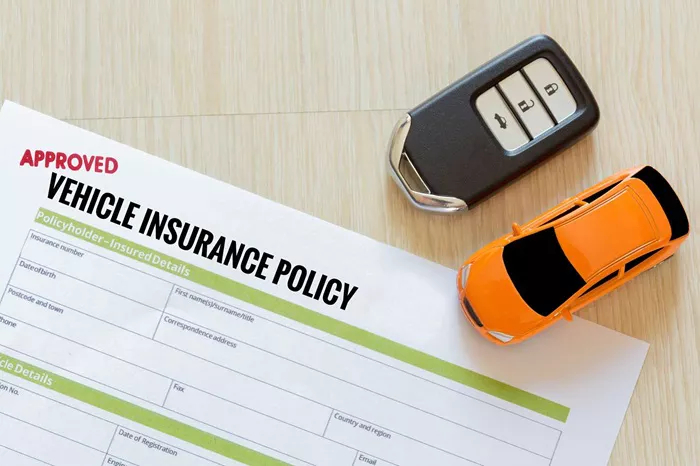Home insurance is a crucial safety net for homeowners. It protects your property and belongings from unexpected events, such as theft, natural disasters, and accidents. However, when it comes to getting the right coverage, knowing what information you need to provide is essential. Many homeowners, especially those purchasing insurance for the first time, may feel overwhelmed by the process. Understanding the details that insurance companies require will help you make the right decision for your home and your family’s future.
This article will walk you through the information you need for home insurance, why each detail matters, and how to get the best coverage.
Why Is Home Insurance Important?
Before diving into the specifics of what information you need for home insurance, let’s take a moment to understand why home insurance is so vital. Home insurance offers financial protection in case of damage to your home or belongings. It also covers liability in case someone is injured on your property. Without proper coverage, you could face significant financial hardship after an accident, natural disaster, or burglary.
Whether you own a single-family home, a condo, or a rental property, insurance ensures that you’re not left to cover the full cost of repairs or replacements out-of-pocket. It can provide peace of mind knowing that you’re financially protected in times of need.
Information Needed for Home Insurance
When applying for home insurance, you’ll be required to provide several pieces of information about your home, your personal situation, and your preferences for coverage. Let’s break down each of these aspects in detail.
1. Personal Information
Insurance companies need to know who they are covering and who will be responsible for the policy. Expect to provide:
Full name: This includes the legal names of everyone listed on the policy.
Contact details: Your phone number, email address, and home address.
Date of birth: To assess your age, which could influence your premiums.
Social Security Number (in some cases): This is primarily used to check your credit history or verify your identity.
This information is necessary for creating your account and ensuring that your insurance policy is properly linked to you.
2. Property Details
The next important category is details about the property you’re insuring. This helps the insurance company assess the level of risk and determine how much coverage you need. Key details include:
a) Address of the Property
The address of your home is one of the first pieces of information you’ll need to provide. It helps the insurance company identify the location of your property and the specific risks associated with that area. Different locations have different risk factors, such as proximity to water, earthquake-prone areas, or regions with a higher crime rate.
b) Type of Home
Insurance companies will want to know what kind of home you have. This can include:
Single-family home: A detached home designed for one family.
Condo: A multi-unit building where you own your individual unit.
Townhouse: A connected home that shares walls with other properties.
Mobile home: A home that can be moved but is permanently set on a site.
The type of home you own will affect your coverage needs and the insurance premium.
c) Year Built
The age of your home is important because older homes may be more prone to wear and tear. Older homes may also lack modern construction features that can minimize damage in case of a disaster. If your home has been renovated or updated, the insurance company may require specifics about what was changed.
d) Square Footage
The size of your home directly impacts the value of the property and the cost to repair or rebuild it. Insurance companies need to know the square footage to assess how much coverage you’ll need.
e) Number of Stories
The number of floors in your home affects both the risk assessment and the cost of coverage. A multi-story home may be more expensive to repair due to the complexity of repairs, fire hazards, or accessibility issues.
f) Roof Type and Condition
The condition of your roof can significantly affect your insurance premiums. Homes with a newer, stronger roof will generally have lower rates because they’re less likely to be damaged in storms. Roofing materials (such as metal, tile, or shingles) and the age of the roof are key factors to consider.
3. Home Features and Renovations
Any features or renovations that make your home unique should also be included when applying for home insurance. These features could increase the value of your property or introduce new risks, both of which affect your premium. Here’s what to consider:
a) Heating and Cooling Systems
Whether you have a central air conditioning system, an old furnace, or a smart home system, the insurance company will want to know the details of your heating and cooling systems. Older or outdated systems may increase the risk of damage, especially if they’re more likely to fail or start fires.
b) Security Features
Insurance companies often offer discounts for homes with security systems. If your home is equipped with features such as smoke detectors, security alarms, fire extinguishers, deadbolts, or surveillance cameras, make sure to mention them during your application. These systems lower the risk of damage or theft and can reduce your premiums.
c) Swimming Pools or Hot Tubs
If you have a swimming pool, hot tub, or any other water feature on your property, you’ll need to disclose this information. These features increase the liability risk of your property, as accidents like drowning could occur. Depending on the type and condition of the pool or hot tub, your premiums may increase.
d) Detached Structures
Homes with detached garages, sheds, barns, or other structures should also be included in your policy. Insurance companies may require additional coverage for these structures, as they may not be covered under standard policies.
4. Personal Property
Home insurance not only covers the structure of your home but also the contents inside. This includes:
Furniture: The value of your sofas, beds, and other furniture.
Electronics: TVs, laptops, and other electronics.
Jewelry and Valuables: Expensive items such as jewelry, art, and collectibles.
Clothing: The total value of clothing in your home.
The more valuables you have, the higher your coverage limits may need to be. Take inventory of your items and their estimated value to help you decide how much personal property coverage you need.
5. Liability Coverage
Home insurance provides liability coverage to protect you if someone is injured on your property or if you cause damage to someone else’s property. This coverage typically includes:
Medical payments: Covers medical expenses for someone who gets injured on your property.
Legal fees: Pays for legal costs if you are sued for injuries or damages that occur on your property.
Liability coverage is especially important if you entertain guests or have children who might accidentally injure others. The amount of coverage you need will depend on the risk factors specific to your home and lifestyle.
6. Deductible and Coverage Limits
One of the most important factors in choosing a home insurance policy is understanding the deductible and coverage limits. The deductible is the amount you must pay out of pocket before your insurance policy kicks in. A higher deductible usually results in lower monthly premiums, but you’ll need to be prepared to pay more upfront in case of a claim.
On the other hand, the coverage limit refers to the maximum amount your insurance will pay in case of a claim. It’s important to choose a coverage limit that reflects the total value of your home and belongings. Underestimating the value of your property could leave you financially vulnerable if something were to happen.
7. Additional Coverage Options
Many insurance companies offer additional coverage options that you can add to your policy. These can include:
Flood insurance: Regular home insurance policies do not cover flood damage, so if you live in a flood-prone area, you may need to purchase separate flood coverage.
Earthquake insurance: Similarly, if you live in an earthquake zone, you may need specialized coverage.
Umbrella insurance: Provides extra liability protection above the standard coverage limit.
When evaluating these options, think about the specific risks your home faces and whether additional coverage is worth the cost.
Conclusion
Getting home insurance may seem complicated, but understanding the information required can simplify the process. Knowing your property’s details, the value of your possessions, and the type of coverage you need will help you make an informed decision. Always work with an insurance agent or company you trust, and don’t hesitate to ask questions to ensure you get the best protection for your home.
By gathering all the necessary information and choosing the right coverage, you can rest easy knowing that your home and belongings are safeguarded against unexpected events.
Related topic:
How Much Is House Insurance In California



















